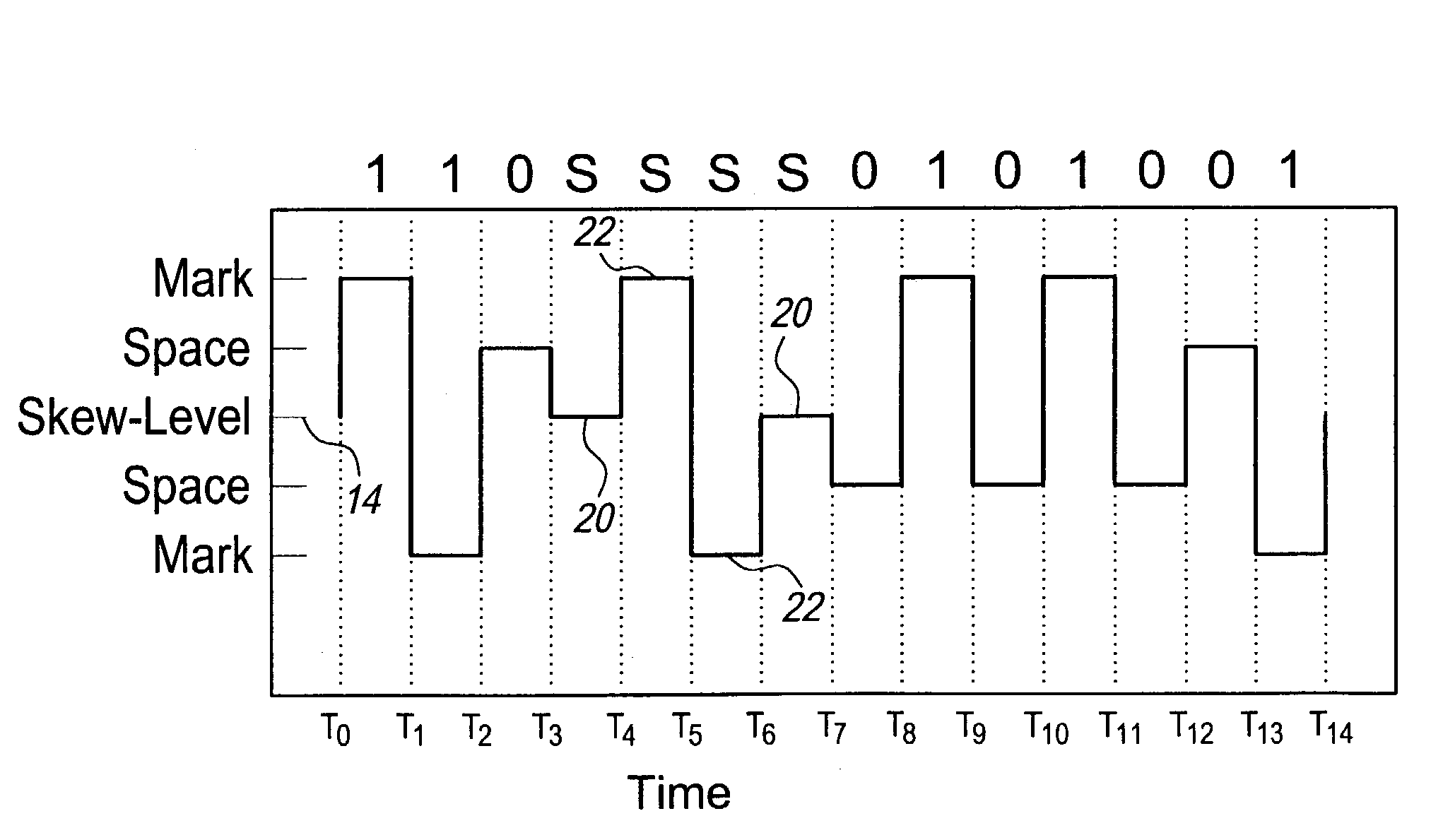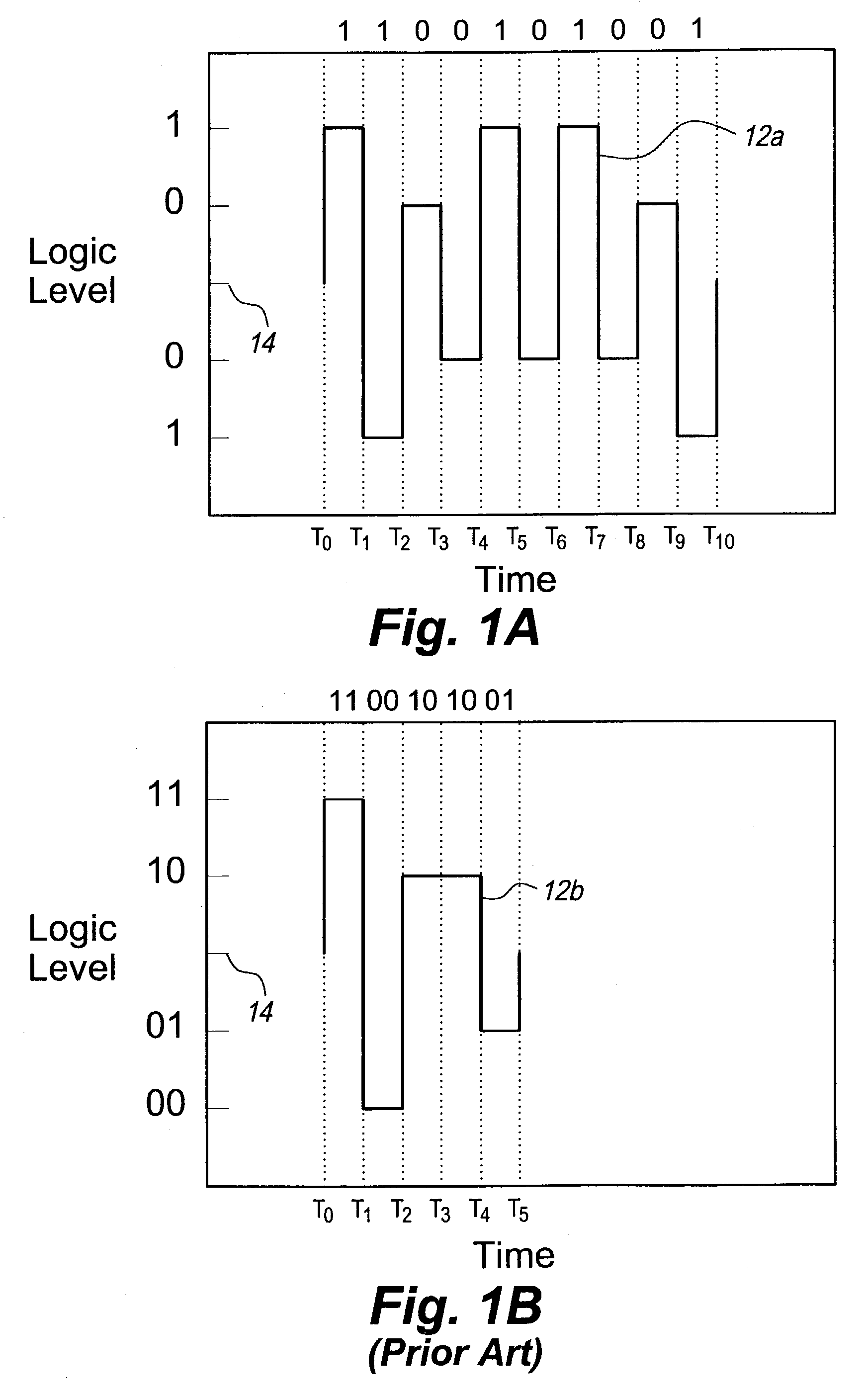Multilevel data encoding and modulation technique
a data encoding and modulation technology, applied in the field of multi-level data encoding and modulation technique for telecommunications and data transmission, can solve the problem of limited bandwidth, achieve the effect of improving noise and interference immunity, and improving the discrimination of logic levels
- Summary
- Abstract
- Description
- Claims
- Application Information
AI Technical Summary
Benefits of technology
Problems solved by technology
Method used
Image
Examples
Embodiment Construction
[0038]The present invention is a multilevel data encoding and modulation technique for the transmission of digital data either over a transmission line or by wireless transmission. FIG. 1A shows an exemplary baseband signal 12a encoded according to the technique of the present invention. As used herein, the term baseband signal refers to a signal of single frequency in the range from zero Hertz upward, which has not been modulated onto a carrier. FIG. 1A shows a sample bit stream, or data stream, in this case the binary stream 1100101001, encoded according to the technique of the present invention. FIGS. 1B–1D show the same binary stream encoded according to three multilevel encoding schemes known in the art for comparison purposes, resulting in the corresponding encoded signals 12b, 12c, and 12d, respectively.
[0039]The multilevel encoding technique of the present invention utilizes two pairs of complementary line or logic levels. In the most basic implementation, each pair of compl...
PUM
 Login to View More
Login to View More Abstract
Description
Claims
Application Information
 Login to View More
Login to View More - R&D
- Intellectual Property
- Life Sciences
- Materials
- Tech Scout
- Unparalleled Data Quality
- Higher Quality Content
- 60% Fewer Hallucinations
Browse by: Latest US Patents, China's latest patents, Technical Efficacy Thesaurus, Application Domain, Technology Topic, Popular Technical Reports.
© 2025 PatSnap. All rights reserved.Legal|Privacy policy|Modern Slavery Act Transparency Statement|Sitemap|About US| Contact US: help@patsnap.com



